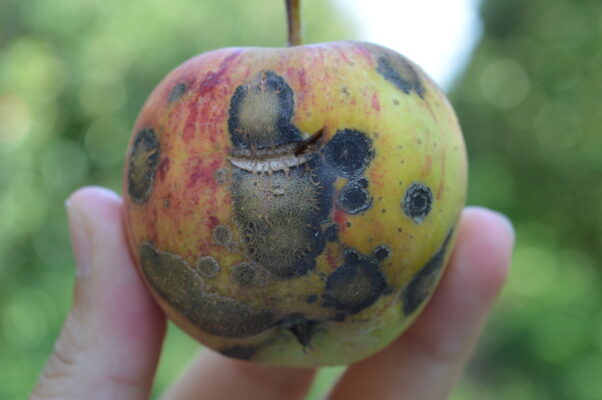Blog, What's Wrong With My Trees?
What Is Wrong With My Tree? Apple Scab On Crabapple
Apple scab is caused by the fungus Venturia inaequalis and is the most common disease of crabapple trees. In spite of severe leaf drop, apple scab rarely kills a tree and severity depends upon that year’s weather conditions. If infection occurs for several years, the tree could be weakened enough to introduce other problems.
 What Are The Signs Of Apple Scab?
What Are The Signs Of Apple Scab?
Apple scab on crabapple trees is often not noticeable right away and can often be confused with other tree diseases such as cedar apple rust. Symptoms include:
- Twisted and puckered leaves
- Black, circular scabby spots on the underside of leaves that develop in late spring
- Velvety-looking spots on top of leaves that have an olive-green, sooty appearance
- Yellowing and dropping of leaves as the disease progresses
- Fruit develops sunken and tan scabby spots
Managing Apple Scab In Your Trees
Keeping crabapples healthy, cleaning up and destroying infected leaves, keeping gardening tools clean and sanitized, and pruning trees to allow for good air circulation is key to helping prevent apple scab. Fungicidal sprays applied by professionals to susceptible trees is also an option, as well as replacing the tree with a variety that is resistant to apple scab. Treatment with fungicides can be very effective and often warranted for crabapple trees with annual leaf spot issues.
